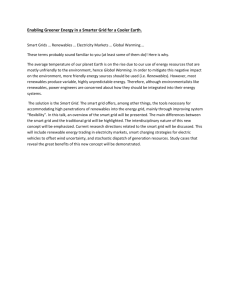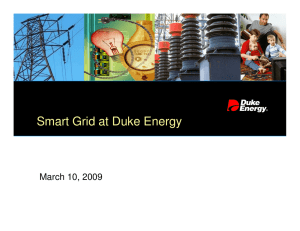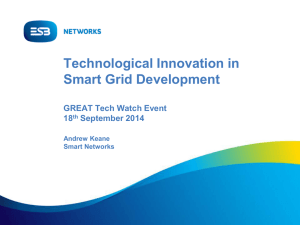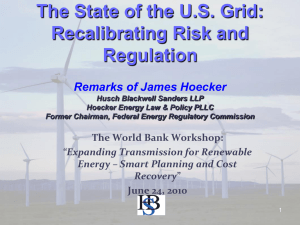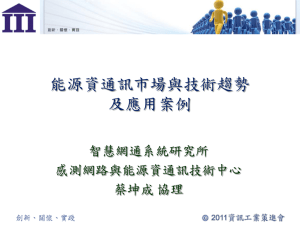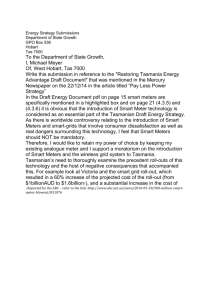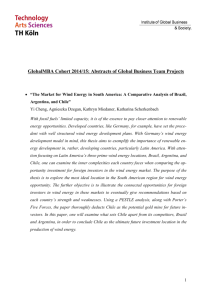fierceenergy1014
advertisement
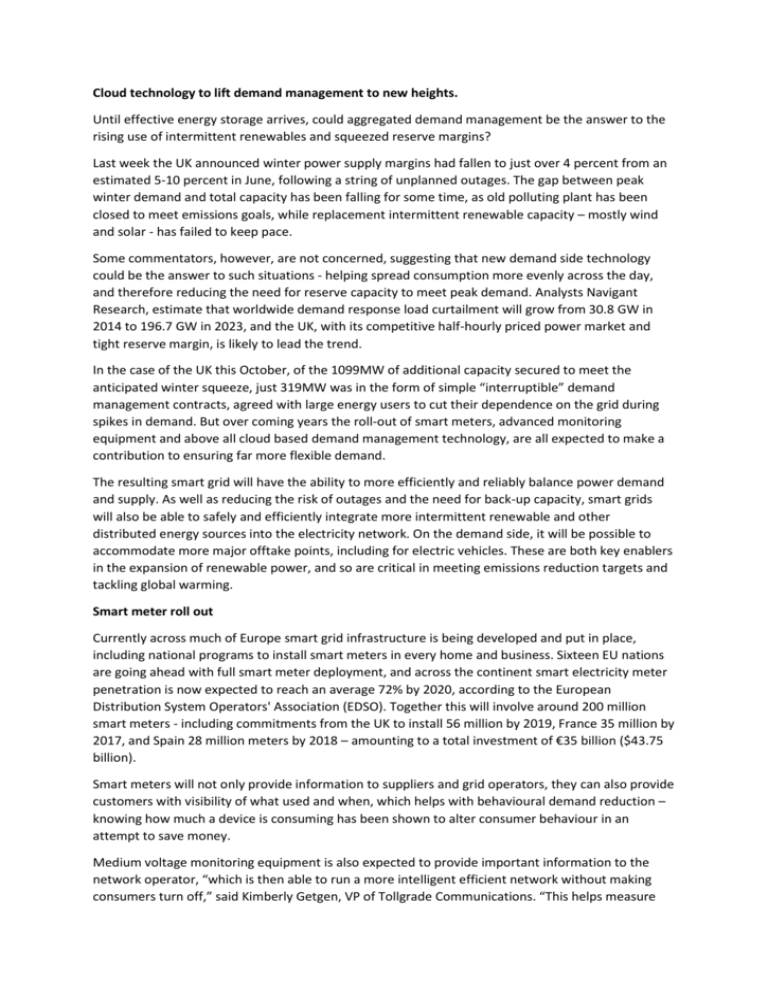
Cloud technology to lift demand management to new heights. Until effective energy storage arrives, could aggregated demand management be the answer to the rising use of intermittent renewables and squeezed reserve margins? Last week the UK announced winter power supply margins had fallen to just over 4 percent from an estimated 5-10 percent in June, following a string of unplanned outages. The gap between peak winter demand and total capacity has been falling for some time, as old polluting plant has been closed to meet emissions goals, while replacement intermittent renewable capacity – mostly wind and solar - has failed to keep pace. Some commentators, however, are not concerned, suggesting that new demand side technology could be the answer to such situations - helping spread consumption more evenly across the day, and therefore reducing the need for reserve capacity to meet peak demand. Analysts Navigant Research, estimate that worldwide demand response load curtailment will grow from 30.8 GW in 2014 to 196.7 GW in 2023, and the UK, with its competitive half-hourly priced power market and tight reserve margin, is likely to lead the trend. In the case of the UK this October, of the 1099MW of additional capacity secured to meet the anticipated winter squeeze, just 319MW was in the form of simple “interruptible” demand management contracts, agreed with large energy users to cut their dependence on the grid during spikes in demand. But over coming years the roll-out of smart meters, advanced monitoring equipment and above all cloud based demand management technology, are all expected to make a contribution to ensuring far more flexible demand. The resulting smart grid will have the ability to more efficiently and reliably balance power demand and supply. As well as reducing the risk of outages and the need for back-up capacity, smart grids will also be able to safely and efficiently integrate more intermittent renewable and other distributed energy sources into the electricity network. On the demand side, it will be possible to accommodate more major offtake points, including for electric vehicles. These are both key enablers in the expansion of renewable power, and so are critical in meeting emissions reduction targets and tackling global warming. Smart meter roll out Currently across much of Europe smart grid infrastructure is being developed and put in place, including national programs to install smart meters in every home and business. Sixteen EU nations are going ahead with full smart meter deployment, and across the continent smart electricity meter penetration is now expected to reach an average 72% by 2020, according to the European Distribution System Operators' Association (EDSO). Together this will involve around 200 million smart meters - including commitments from the UK to install 56 million by 2019, France 35 million by 2017, and Spain 28 million meters by 2018 – amounting to a total investment of €35 billion ($43.75 billion). Smart meters will not only provide information to suppliers and grid operators, they can also provide customers with visibility of what used and when, which helps with behavioural demand reduction – knowing how much a device is consuming has been shown to alter consumer behaviour in an attempt to save money. Medium voltage monitoring equipment is also expected to provide important information to the network operator, “which is then able to run a more intelligent efficient network without making consumers turn off,” said Kimberly Getgen, VP of Tollgrade Communications. “This helps measure the effectiveness of demand reduction programs, and, combined with other real-time information such as temperature, can help run the system smarter, put off capacity expansion and avoid outages.” The management of many But the most important element in the demand management mix could be cloud-based software systems linking the hardware, which are able to shift the energy use of many individual consuming assets from one time period to another, using advanced communications and software technology from the mobile phone sector. This contrasts with fitting hardware that will trip out when certain parameters are reached, and can provide energy trading opportunities in competitive markets priced by the hour or half-hour – as in the UK – as well as the option of instantaneous rapid reduction. Rather than shutting off demand from large consumers, such systems can make aggregated use of the consumption flexibility of many consuming devices, including fridges and heating – which do not need constant power. The wider the flexibility range for that customer’s devices, the more demand can be varied. By using the cheapest energy, a share of the saving can be passed back to the customer for providing the flexibility. Large consumers with many sites and consuming devices are best placed to benefit initially, but the principle could eventually be applied to individual residential users as well. By raising demand in response to energy market price falls linked to surges in renewable power, cloud systems can utilize intermittent renewable power much more efficiently. This avoids grid payments to wind producers for not generating power when demand is low – a perverse result of the existing UK system. Over the last 15 years reducing energy consumption has been the main consumer focus. This could now switch to making energy use as cost effective as possible by buying when it is cheapest, in competitive energy markets at least, according to Marc Borret, CEO of Reactive Technologies, a cloud technology developer. The change is expected to encourage renewables and on-site generation, making the whole system less of a linear one-way centrally planned operation, he said. Clean-tech innovations are set to aid the many thousands of residential, commercial and industrial electricity customers who want to manage their energy consumption in a smarter, more flexible and profitable way, while also helping integrate renewables and cut peak backup capacity in the process.
